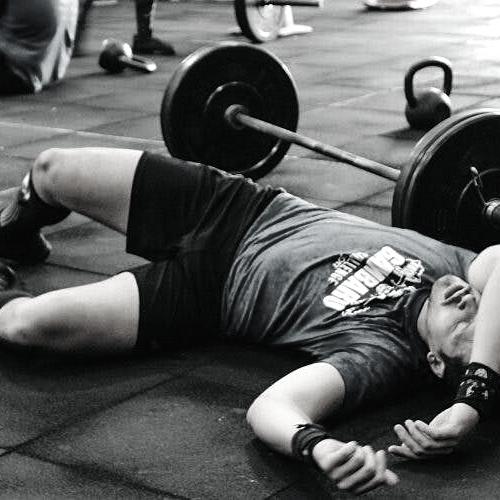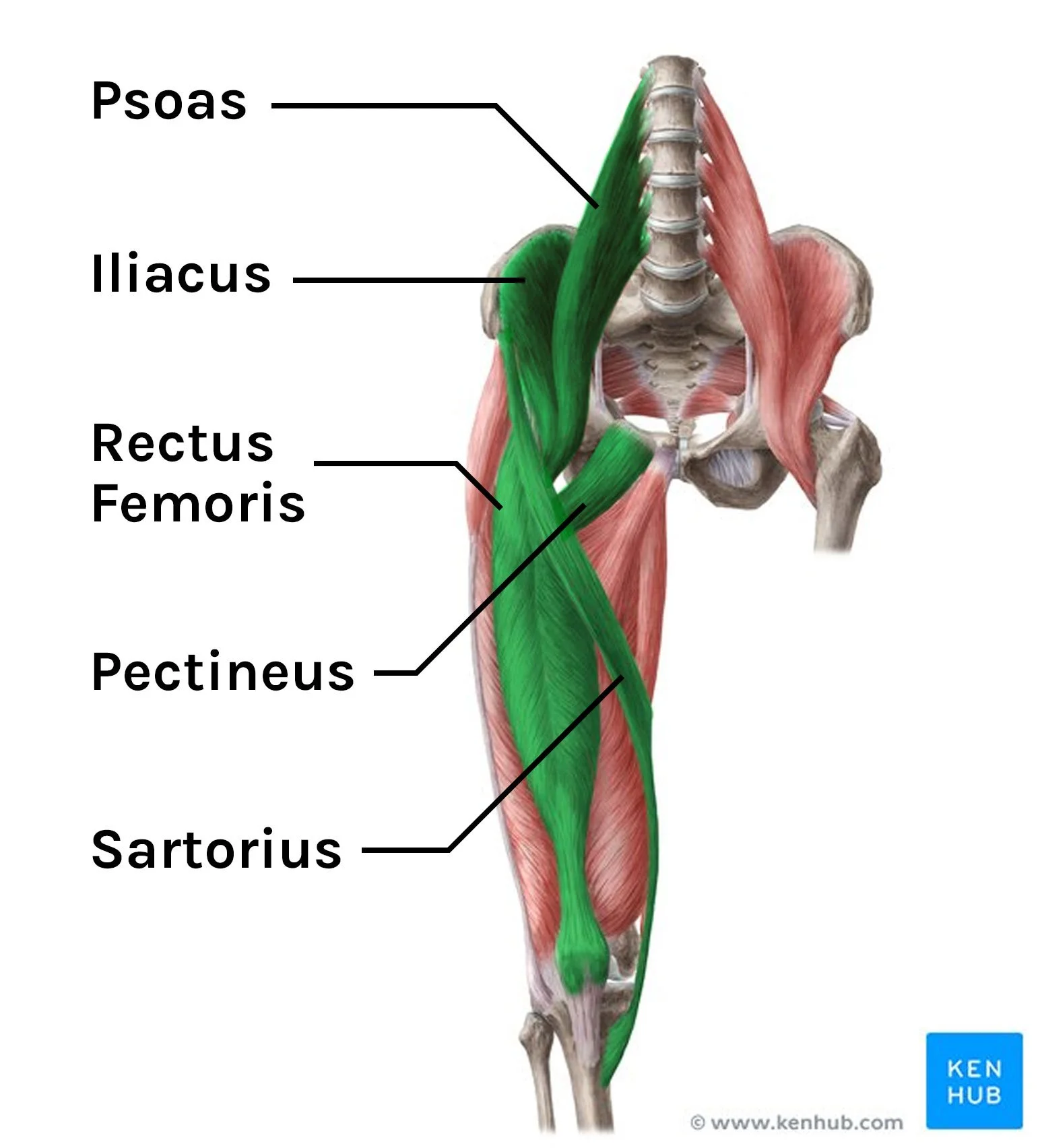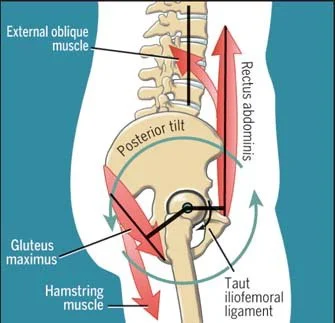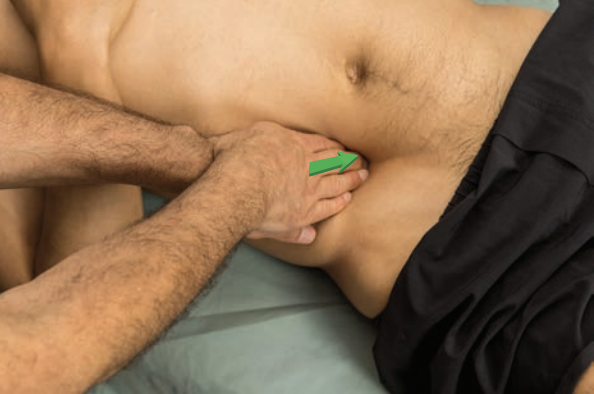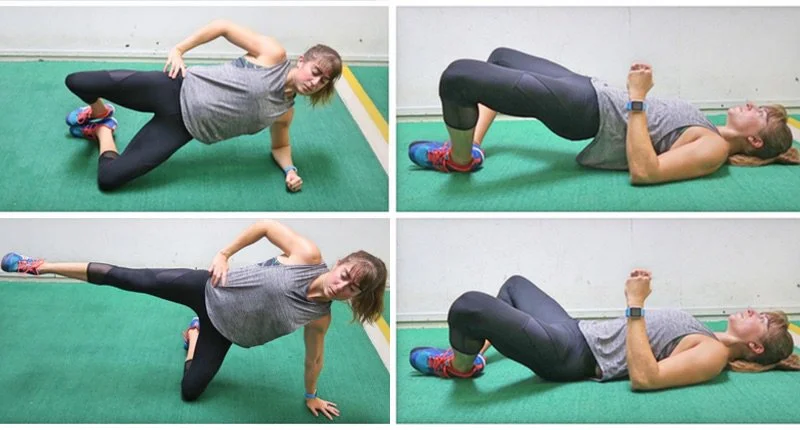Hip Pain When Squatting? Fix it quickly!
Don’t let hip pain get in the way of you performing at your peak.
Hip pain is common in weight lifting accounting for 4.0% –7.1% of all injuries.
If you're suffering from pain at the front of your hips, then listen up!
Due to CrossFit being a high-intensity exercise, excessive joint tension is often created when the correct form is lost due to fatigue.
Despite being reported less frequently than shoulder or knee injuries, 4.0% –7.1% of all injuries are hip and groin-related.
The hips have a powerful connection to overall performance in weight-lifting sports and muscle imbalances are often the reasons why hip pain is so prominent.
If you're suffering from hip-related issues, no matter who you are, this article will help you relieve pain, improve your lifts and optimise your performance.
If you’re in pain and have been for a while come and see us for a thorough assessment to find the root cause - Book appointment.
Case Study
A few months ago, I treated a CrossFitter called Joanne in my clinic. She was suffering from anterior hip pain (pain at the front of the hip joint) for approximately 2 months.
At first, she ignored it but it continued to get worse over time until she was getting a sharp pain at the bottom of her squat position.
It also got worse during hip flexion (lifting knee towards chest) type exercises e.g. box jumps, deep squats, mountain climbers etc.
It started at the front of her hip and then she developed posterior hip pain (pain at the back) and groin pain.
She had her coaches watch her squat form but they were unable to change her hip pain during squats.
She was frustrated because she couldn't train and wasn't getting any answers from her GP. She had been diagnosed with hip bursitis and told to rest.
She went back to the GP, was given painkillers, and some basic stretching exercises to improve her hip tightness and was referred to an NHS Physio but was told this could be up to 12 months.
She started a hip mobility program at home and this settled her pain. She was advised to return back to the CrossFit gym and see if the pain came back. She did this 2-3 times but every time the pain came back worse.
Frustrated and helpless, she found my Liverpool physiotherapy clinic (Functional Movement Physio) and came in for an assessment.
Joanne’s Story
As you can see Joanne has a large forward lean and she is favouring her quad to do the squat.
Her glutes are in a lengthened, weak position. She has excessive anterior pelvic tilt and this is putting lots of stress on her lower back.
Keep reading as I will explain more in depth and what you can do to egt rid of hip pain and improve your lifts.
What did I find?
We found that she had an issue with overactive, tight hip flexors. This is a common cause of hip pain and there's more to it than just needing to stretch it out.
Quick anatomy lesson...
The hip is a large ball-and-socket joint, consisting of bones, tendons, muscles and ligaments which hold the hip joint in place and keep it stable. The hip socket would be unstable if it wasn't for the muscles and tendons surrounding it giving it stability.
If any of these structures surrounding the hip (mainly muscles and tendons) are out of balance, they can become tight, weak, lack oxygen and hydration. Then this can lead to pain around the hip or groin pain, deep hip pain, hip pinching, pain on the outside of your hip(lateral hip pain) and generally unnecessary pressure on the hips.
We often think that there must be damage to a structure if we're in pain and sometimes this is the case but quite often when there was not a clear trauma or mechanism, it's due to an imbalance.
It would not show up on an x-ray or an MRI and often leaves patients puzzled and unsure where to go next? Until you get to the root cause and find the right structures to blame, then it's unlikely your pain will go away.
Traditional physiotherapy usually treats symptoms and not the root cause e.g. a sports massage will loosen off tight muscles but will it not correct the dysfunction causing the tightness in the first place.
One of the most common hip issues that we see at FM physio Liverpool are overactive hip flexors.
What Are Hip Flexors?
The hip flexors are muscles located in the hip that are responsible for flexing the hip joint mainly during activities such as squatting, jumping, stairs, walking and sprinting. They play such a vital part of how we move day to day.
The hip flexors can become weak and shortened from sitting down for long periods and without strong hip flexors, we would not be able to perform everyday activities, maintain proper posture or keep our backs straight during lifting and carrying.
What Causes Hip Flexor Pain? What Causes Tight Hip Flexors?
In the case of Joanne, she was suffering with overactive hip flexors caused by a change in the strength relationship of her hamstrings, glutes and hip flexor muscles.
If your glutes are under active then you have to rely on the hamstrings to take you leg behind your body when walking, running, jumping etc.
The hamstrings pull on the femur (thigh bone) causing the hip ball and socket joint to move forwards in the socket, which then leads to anterior hip pain and hip flexor issues.
The hip flexors tend to tighten up to try and pull the femur back into the socket and give it stability. The hip flexors can only do this for a short period of time before they start to get painful.
She had an excessive anterior pelvic tilt which further showed that she had poor glute and core control and when assessing her do an overhead squat, it was even more obvious.
She had overworked muscles in her lower back called the erector muscles because her glutes were weak in comparison, so she ended up using her back more when she was lifting. This added extra stress on her spinal discs, ligaments and muscles. If left alone this could have caused her ongoing back issues.
If this pain is ignored, worst case scenario would be persistant pain and arthroscopic hip surgery further down the line due to damage within the hip joint.
Visually, she had big thigh muscles but she did not realise that these were over dominant and were the cause of her tightness in the hip flexor.
Its like tug of war between the front and the back.
As you can see the glutes and hamstrings stop the pelvis from tilting too far forwards and this gives stability to the back and core however if the balance is off then the hip flexors and core tighten causing pain. Its like tug of war between the front and the back.
How can you tell if your hip flexors are tight, weak and/or overactive?
Firstly, if you have tight hip flexors, it can be a sign that your hip flexors are overactive. You might experience tightness at the front of your hips during squats, lunges, OH squats etc, sometimes within the groin region, as well as lower back pain.
There is no true way of being 100% confident but if you try the exercises below it should give you a pretty good picture and idea of what you need to work on.
If you find this position hard to get into, or you have anterior hip pain when you're in full posterior tilt, it's likely that you have tight, weak and over active hip flexors. The next test involves feeling for the hip flexor tendons, I’ll explain to you how to do this.
If you find the two boney areas on the front of your pelvis/ hips (anterior superior iliac spine), go up about an inch, you should find a ridge, if you push into that region, . If you push into that and get discomfort, muscle tissue should not be painful; to touch so it indicates that there is an issue.
Hip flexor stretch with chair behind
Hip flexor stretch without chair
This is often peoples favourite hip flexor stretch however a lot of people do not do it properly because they are very passive in the movement and do not engage the glutes giving them a false indication that their hip flexors are not an issue Technique contract your glutes on the leg thats on the chair.
The Bottom Line on Hip Flexors
The bottom line on hip flexors is that they are a vital part of the body, and need to be kept in good condition. They help to provide stability when we walk, run, jump, or lift and can be damaged if not used correctly. Pain in the hip flexors is often caused by an imbalance somewhere else, find that imbalance and POOF! No pain and better lifting.
How Do I Get Out of Pain and Back to Squats, Deadlifts and Olympic Lifts?
Squatting, deadlifts and Olympic lifts can be a great way to build muscle and strength, but they can also cause hip pain if you don't have the right technique or have a muscle imbalance.
If you are experiencing hip pain in the front of your hip or at the bottom of your squat, it is important to not continue to keep taking your body into that position without finding out why.
You wouldn't take out the warning bulb in your car and ignore it so why do you ignore pain in your body and continue to push past it?
If you want to stay out of pain, don't forget to train key muscles like the glutes, glute medius, glute minimus, lateral hip rotators, tensor fascae latae, quadratus lumborum.
These keep the balance around your body and make sure you do not overload some once area more than another.
You will see a huge difference in your squat, lunge, deadlift performance if you commit to strengthening these areas. It's not sexy but necessary!
Step 1: Stop Stretching The Hip Flexors
Stretching should be done with caution as too much stretching can lead to inflammation or overstretching which can cause more hip flexor pain. If you are stretching sore, tight hip flexor muscle regularly without targeted corrective exercise then they can become even more painful.
Occasionally stretching will help but 9/10 it will come back because they havent got to the root cause. If you've tried stretching but you're not getting anywhere then you need to look somewhere else.
Working on strengthening the glutes will naturally stretch the hip flexors in a more natural way. It will reposition your pelvis and the force couples acting on one another - See picture.
Spoiler alert: Stretches such as pigeon pose and happy baby won't actually solve the problem. Read on for the best exercises for tight over-active hip flexors.
What are the best exercises for hip flexor pain?
If you want to become pain free and address the root issue causing your hip pain, focus on improving hip extension strength, strengthening the gluteal muscles, and learn more about the anatomy of your hip.
Weighted Hip Thrust
2. Weighted Deadbugs
Dead-bugs without weight
Weighted Dead-bugs
3. Hip Extension & Abduction
Glute medius/minimus exercises
Hip extension strength
Load
The glutes need to be taken to fatigue in order to get stronger, there is not point in doing any of the glute exercises if you are not taking it to fatigue and don’t get muscle ache the next day. They are endurance muscles and need a lot of stimulation.
As well as strengthening we also use a range of different fascia release techniques depending on where you are tight and need your fixations released. This involves using a hard ball, a stick or a foam roller. I would recommend talking to a professional if you don’t know what you're doing with these.
What happened to Joanne?
We worked on improving her glute and core strength with targeted corrective exercises at the right dose.
We released her tight hip flexors with instrument massage, acupuncture and PMH stretching, this started to reduce hip pain and stopped her pain at the bottom of the squat.
We then started to work on her positioning during a squat, overhead squat and snatch to make sure she could maintain the right position rather than losing her form.
Over the course of 3-4 weeks, she started to see some significant improvements. She has recently returned back to CrossFit without issue and continues to come in for corrective exercise sessions to bulletproof her body and make her what we call "anti-fragile"
Return to Weight Training After Hip Pain Program
Returning to weight training after hip pain can be challenging. It is important to take it slow and listen to your body during the process. It is best to begin with low-intensity exercises such as bodyweight squats, glute bridges, and side-lying abduction exercises. Building up your load slowly whilst continuing to do your corrective exercise and self-fascia release is essential. This can be a frustrating process and a physiotherapist can help you return without your hip pain recurring.
Other causes - Hip Impingement
Hip impingement is a condition where there is too much friction around the hip joint. This friction can cause pain and damage to the hip and surrounding area.
Femoroacetabular impingement (FAI) is a type of hip impingement that occurs when there is an abnormality in the way the bones fit together around the hip joint.
The cause of the pain can be worsened by activities such as CrossFit, running, jumping, squatting and lifting due to excessive rubbing of the bones against each other. It can also lead to decreased range of motion in the hip and hip pain.
Femoral acetabular impingement can be quite common in the athletic population. You often feel pain around the hip bone or inner hip rather than the muscle tissues although you can develop both hip flexor strain and impingement.
Weakness in the muscles can cause hip impingement due to a change in the stability of the joint over time. Improving hip strength can reduce pain, reduce inflammation of the hip, improve hip movement and help prevent impingement.
We will talk about hip impingement in my next article.
Any athletes with hip pain, send me an email at hello@functionalmovementphysio.co.uk or book an appointment via our website HERE
We are situated in Liverpool City Centre. Here are some of our most recent results https://www.functionalmovementphysio.co.uk/results/testimonials
For more information in crossfit injuries, head to https://academic.oup.com/jhps/article/7/1/109/5717926 for a recent study. Joshua S Everhart, Sarah Poland, Sravya P Vajapey, James C Kirven, Thomas J France, W Kelton Vasileff, CrossFit-related hip and groin injuries: a case series, Journal of Hip Preservation Surgery, Volume 7, Issue 1, January 2020, Pages 109–115, https://doi.org/10.1093/jhps/hnz072

